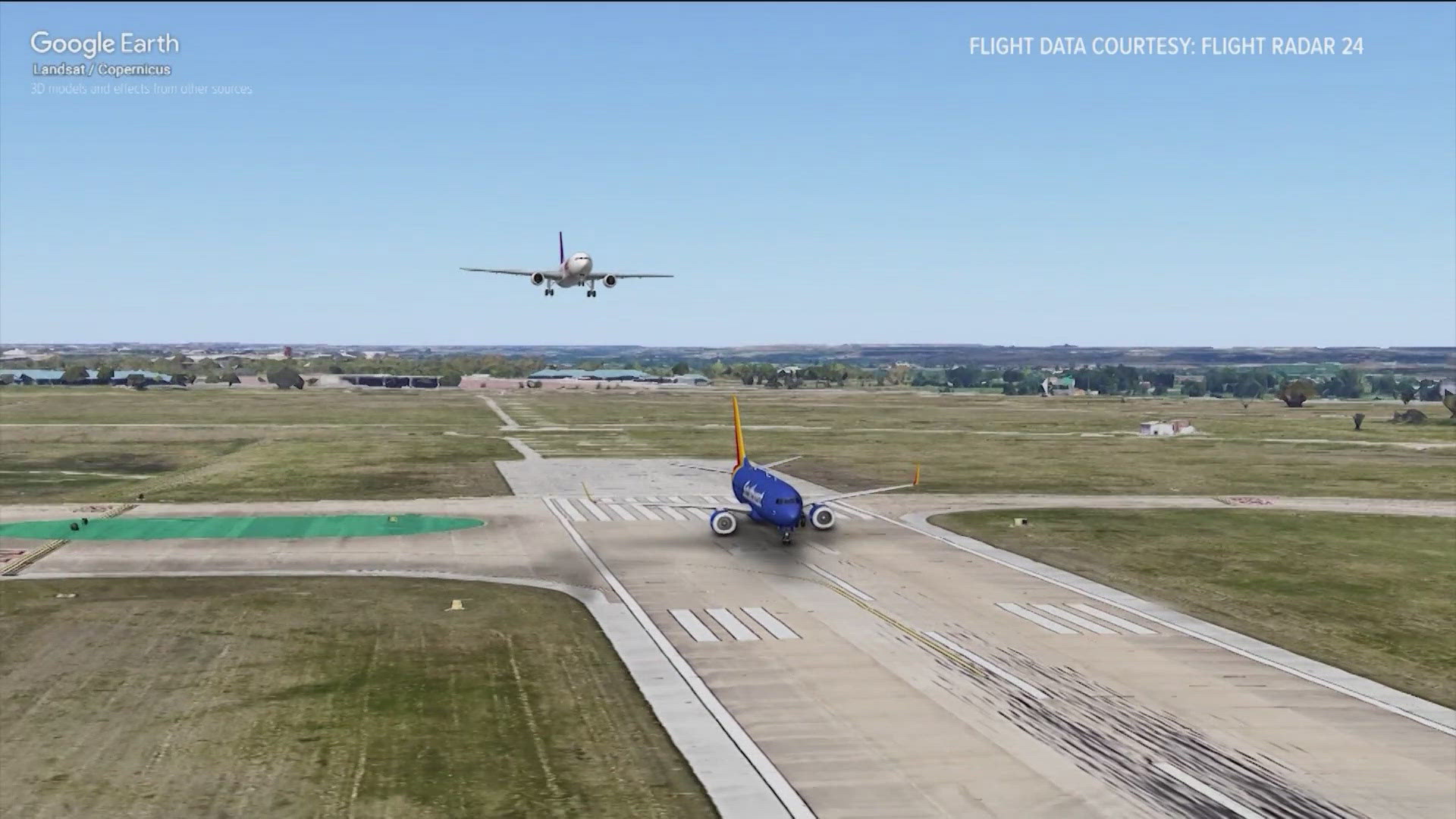AUSTIN, Texas — Federal investigators are now saying an air traffic controller is at fault for a near-collision on the runway at Austin-Bergstrom International Airport last year.
On Feb. 4, 2023, a Southwest Airlines flight bound for Cancun and a FedEx cargo plane heading into Austin from Memphis came within 200 feet of each other, almost colliding.
“I’m very glad we’re talking about a near-miss today and not the other result that could have happened,” Michael Graham, a member of the National Transportation Safety Board (NTSB), said Thursday. “We could be talking about a tragedy.”
From its investigation into the incident, the NTSB concluded that the air traffic controller who was monitoring the planes made an incorrect assumption that the Southwest flight would leave before the cargo plane came in.
“If the controller had an airplane inbound, even though he thought that it was safe to clear the Southwest onto the runway, he should have told the Southwest to expedite the takeoff,” Mike Slack, the managing partner of Slack Davis Sanger, said.
Slack, a board-certified aviation attorney, said assumptions are extremely dangerous in aviation.
“All of the systems broke down around the fact that the assumption was made, and there was not independent verification of the position of the Southwest airplane on that active runway,” Slack said.
The NTSB also came to the conclusion that the Austin airport’s lack of surface detection equipment was to blame for the incident. The Federal Aviation Administration (FAA) doesn’t require this technology, which tracks the movement and determines the proximity of aircrafts on the ground, but the Austin airport is set to get it by the end of the year.
Another element leading to the incident was the dense fog in the air the day of the close call. The board said the air traffic controller was not able to see the Southwest plane almost 4,000 feet away from the taxiway.
As a result of their investigation, the NTSB made seven safety recommendations. One was to make sure that air traffic controllers communicate directly with pilots when visibility is low. Another is that the FAA require refresher training on low-visibility operations.
The board also determined in its investigation that although the fault is on the air traffic controller, the Southwest flight crew should have notified the controller if they would be on the taxiway for longer. Because of that, the board made a new safety recommendation that pilots should tell controllers if they will need more time on the runway before they get onto the active runway.
Another recommendation from the board was to make sure that the FAA equips all airports with the ground radar technology. Austin is set to get a tool that does that next month.

